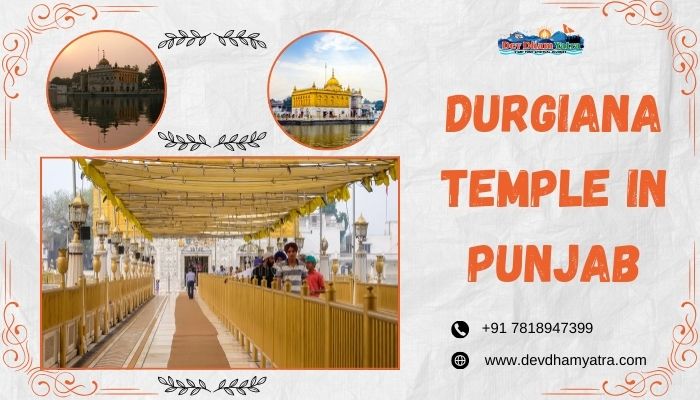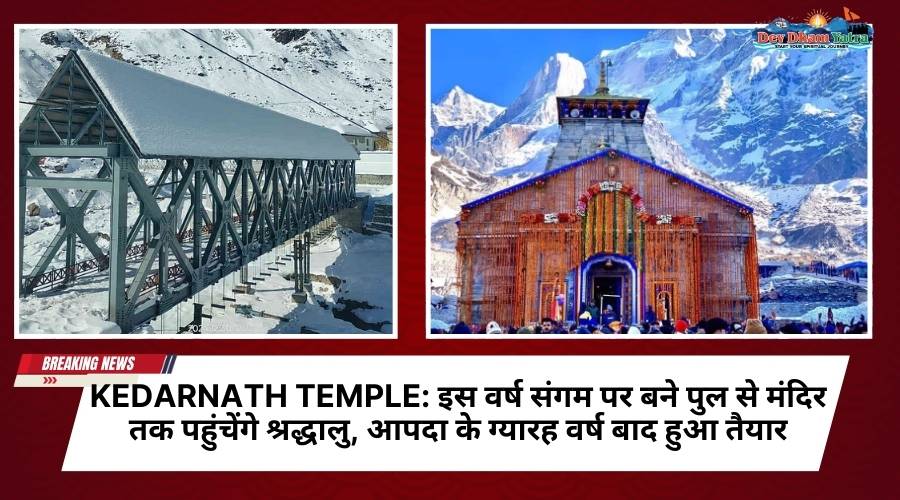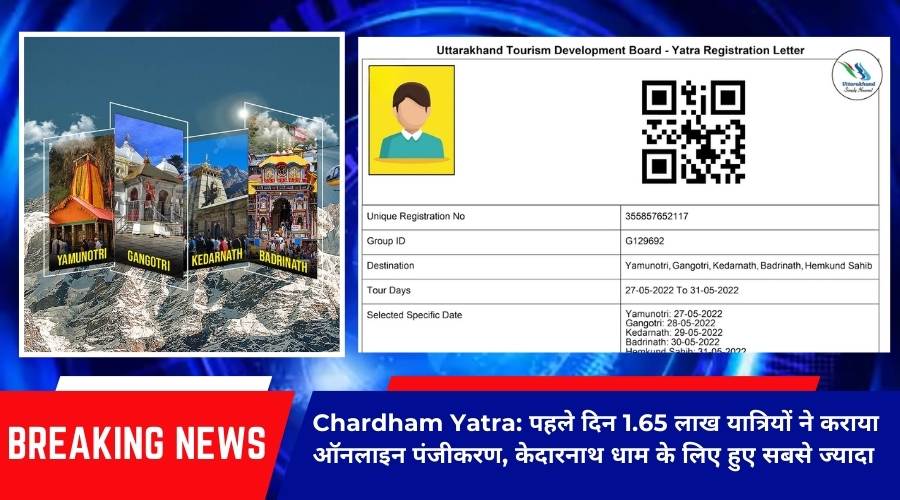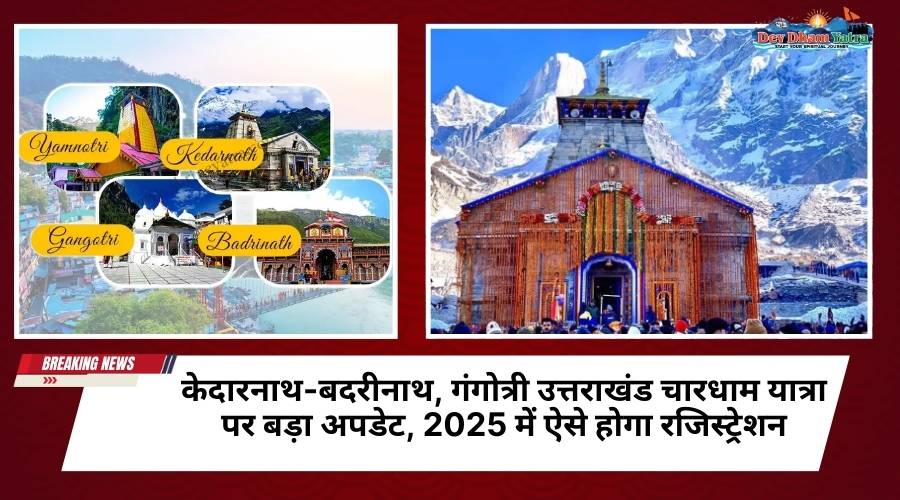History of Durgiana Temple In Punjab
The Durgiana Temple, also known as the Durgiana Mandir or Sitla Mandir, is located in Amritsar, Punjab, India. The temple’s history dates back several centuries and is closely associated with the religious and cultural heritage of the region.
Origin and Founding: The original temple is believed to have been built in the 16th century, during the reign of Guru Hargobind Sahib, the sixth Guru of the Sikhs. Guru Hargobind Sahib is said to have constructed the temple in honor of Goddess Durga, making it a significant place of worship for the local Hindu community.
Renovation and Expansion: Over the years, the Durgiana Temple underwent several renovations and expansions to its present form. Various rulers and Sikh Maharajas contributed to its maintenance and embellishment, ensuring its continued existence as an important religious site.
Name and Significance: The temple is named after Goddess Durga, who is also known as Durga Mata or Durgiana. Devotees flock to the temple to seek her blessings and protection, especially during festivals and auspicious occasions.
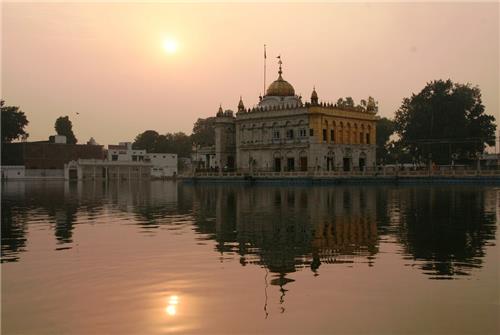
Architecture:
The architecture of the Durgiana Temple is a blend of Hindu and Sikh styles, with the design bearing resemblance to the nearby Golden Temple, a sacred Sikh Gurdwara. Here are some architectural features of the Durgiana Temple:
Entrance and Main Gateway: The temple’s main entrance, known as the Darshani Deori, features an intricately designed gateway with colorful patterns and symbolic carvings. This gateway leads to the main temple complex.
Golden Spire (Shikhar): Like the Golden Temple, the Durgiana Temple’s main sanctum is crowned with a golden pinnacle (shikhar) that adds to the temple’s beauty and grandeur.
Central Sanctum: The main sanctum houses the idol of Goddess Durga. The sanctum’s interior is adorned with beautiful artwork and carvings, creating a spiritually charged environment for devotees.
Marble Pathways: The walkways and pathways inside the temple complex are often laid with smooth marble, offering a comfortable and serene atmosphere for visitors.
Ceilings and Walls: The temple’s interior walls and ceilings are adorned with intricate artwork and religious motifs, reflecting the cultural and spiritual significance of the place.
Gardens and Sarovar: The temple complex includes well-maintained gardens and a sacred pond (sarovar), which add to the overall peaceful ambiance of the site.
Multiple Shrines: Besides the main shrine dedicated to Goddess Durga, the temple complex houses smaller shrines dedicated to other Hindu deities, catering to the various aspects of worship.
The Durgiana Temple’s unique architecture and historical importance make it a significant religious and cultural landmark in Amritsar, drawing devotees and visitors from all over India and beyond.
Features and designs:
The Durgiana Temple, also known as the Durgiana Mandir or Sitla Mandir, is a Hindu temple located in Amritsar, Punjab, India. The temple’s architecture and design exhibit a unique blend of traditional and contemporary styles. Here are some of the prominent features and designs of the Durgiana Temple:
Architectural Style: The temple’s architectural style is reminiscent of the famous Golden Temple (Harmandir Sahib) located nearby. The design draws inspiration from the Sikh architecture prevalent in the region.
Main Entrance (Darshani Deori): The temple’s main entrance, known as the Darshani Deori, features a beautiful gateway with intricate carvings. The doorway is adorned with colorful patterns and symbols, creating an inviting and visually appealing entry point.
Golden Spire (Shikhar): Like the Golden Temple, the Durgiana Temple also boasts a golden pinnacle (shikhar) atop its main sanctum. The gilded spire stands out against the sky, making the temple an impressive sight.
Central Sanctum: The main sanctum of the temple houses the idol of Goddess Durga, the presiding deity of the temple. Devotees offer prayers and seek blessings in this sacred area.
Marble Steps: The pathway leading to the main sanctum is lined with smooth marble steps. These steps are often cool to the touch and provide a comfortable walking surface for visitors.
Ceilings and Walls: The interior of the temple is adorned with ornate ceilings and decorative walls. Intricate patterns and motifs add to the temple’s beauty and religious significance.Sacred Pond (Sarovar): The Durgiana Temple complex also includes a sacred pond (sarovar), which adds to the tranquil and serene atmosphere. Devotees may take a dip in the pond as a symbol of purification before entering the temple.
Gardens and Landscaping: The temple’s surroundings are beautifully landscaped, with well-maintained gardens and greenery. These add to the peaceful ambiance of the temple and provide a serene place for visitors to sit and meditate.
Multiple Shrines: In addition to the main shrine dedicated to Goddess Durga, the temple also houses smaller shrines dedicated to other Hindu deities. These shrines cater to various aspects of worship and devotion.
Festival Decorations: During festive occasions and special events, the temple is adorned with colorful decorations, lights, and flowers. Festivals like Navratri and Dussehra witness elaborate decorations that enhance the temple’s beauty and festive spirit.
The Durgiana Temple’s design reflects the cultural and religious significance of the region and attracts devotees and visitors from various parts of India and beyond. Its architecture, adorned with intricate artwork and symbolic elements, offers a unique experience for those seeking spiritual solace and cultural enrichment.
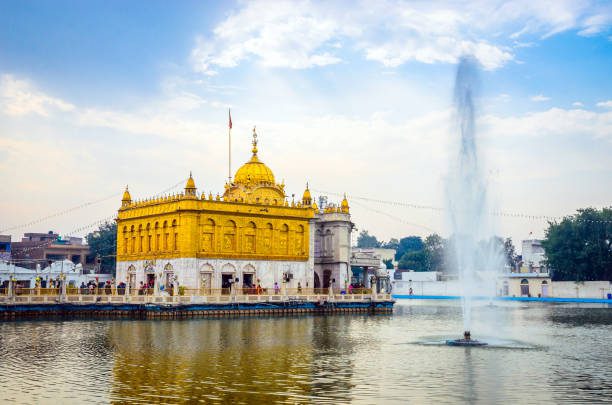
Festivals and Cultural events:
Major Hindu festivals celebrated in the temple are Dussehra, Janmashtami, Rama Navami, and Diwali.[1] A Sāwan festival is also celebrated in Durgiana Mandir in the Holy Shravan month of Hindu Calendar where newlywed couples gather at temple to worship Radha Krishna. Durgiana temple complex is the famous ‘Langur Mela’ during 10 days of Navratri and Dussehra. Pilgrims in large numbers throng to the Bada Hanuman temple, with their children dressed as Langur to offer prayers in this temple, situated in the Durgiana temple complex.
Navratri: Navratri is one of the most important festivals celebrated at the Durgiana Temple. It is a nine-day festival dedicated to Goddess Durga and her various manifestations. The temple sees an influx of devotees during this time who come to seek the blessings of the goddess and participate in the festivities. Special puja ceremonies, bhajans, and kirtans are organized throughout the nine days.
Dussehra: The tenth day of Navratri, known as Dussehra, is celebrated with great fervor at the Durgiana Temple. It marks the victory of good over evil, as on this day, Lord Rama is believed to have defeated the demon king Ravana. The temple may hold special events and processions to commemorate this auspicious occasion.
Other Hindu Festivals: The Durgiana Temple likely observes other Hindu festivals as well, such as Diwali, Holi, Janmashtami, and others. These festivals bring devotees together for celebrations, prayers, and offerings to the goddess. If i visit during the Navratri festival, I have a chance to experience the vibrant celebrations at the temple. The festive atmosphere with colorful decorations and devotional activities is a unique experience.
Aarti and Prayers: Daily Aarti (ritual worship with lamps) and prayers are an integral part of the temple’s culture. Aarti is usually performed multiple times a day, and devotees actively participate in these rituals, expressing their devotion to Goddess Durga.
Cultural Events: Apart from religious festivals, the Durgiana Temple may host cultural events from time to time. These events may include music performances, dance recitals, and religious discourses, enhancing the overall cultural experience for visitors. And i was going Durgiana Temple The temple is situated near a sacred lake called “Sarovar.” Take a leisurely stroll around the lake and enjoy the serene atmosphere. You may also witness some religious ceremonies or rituals happening around the Sarovar.
Devotional Music: Bhajans and kirtans (devotional songs) form an essential part of the temple’s cultural ambiance. Musicians and singers perform devotional music, creating a spiritually uplifting atmosphere.
Community Participation: The temple’s festivals and cultural events often bring the community together, fostering a sense of unity and devotion among the devotees.
Please note that the specific festivals and cultural activities at the Durgiana Temple may vary from year to year or based on local customs and traditions. If you plan to visit the temple during a particular festival or event, it’s a good idea to check with the temple authorities for the most up-to-date information on schedules and activities.

